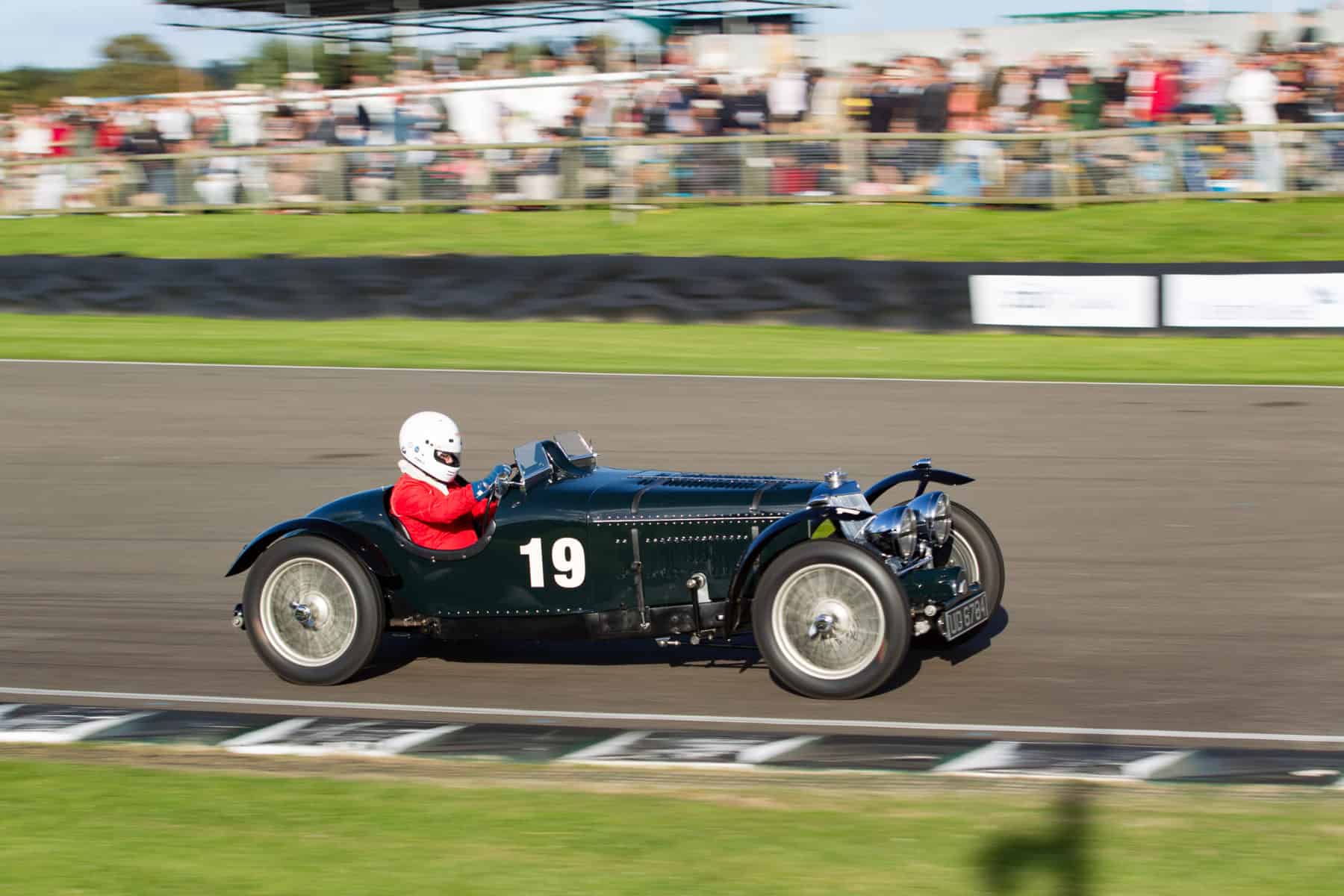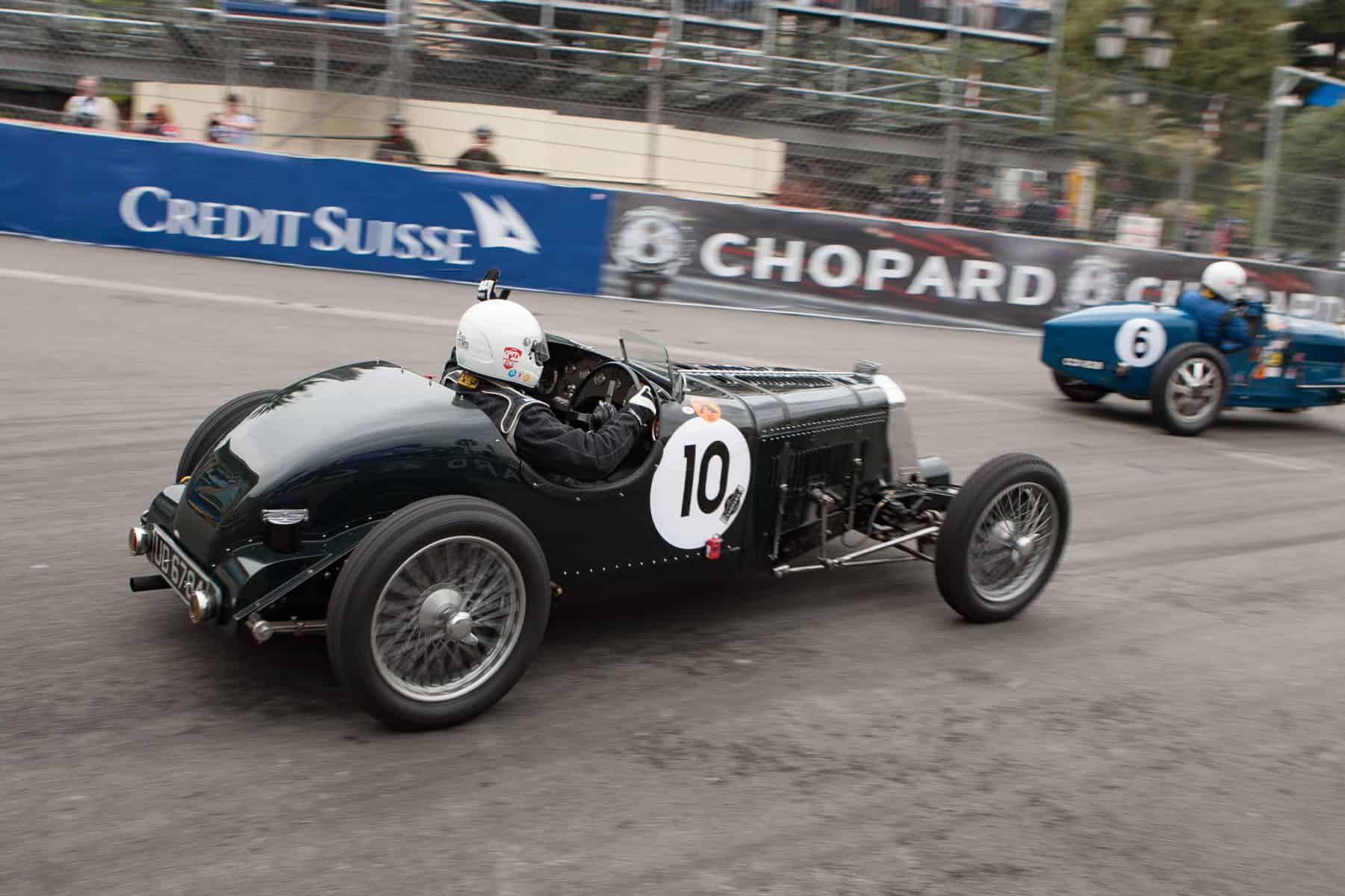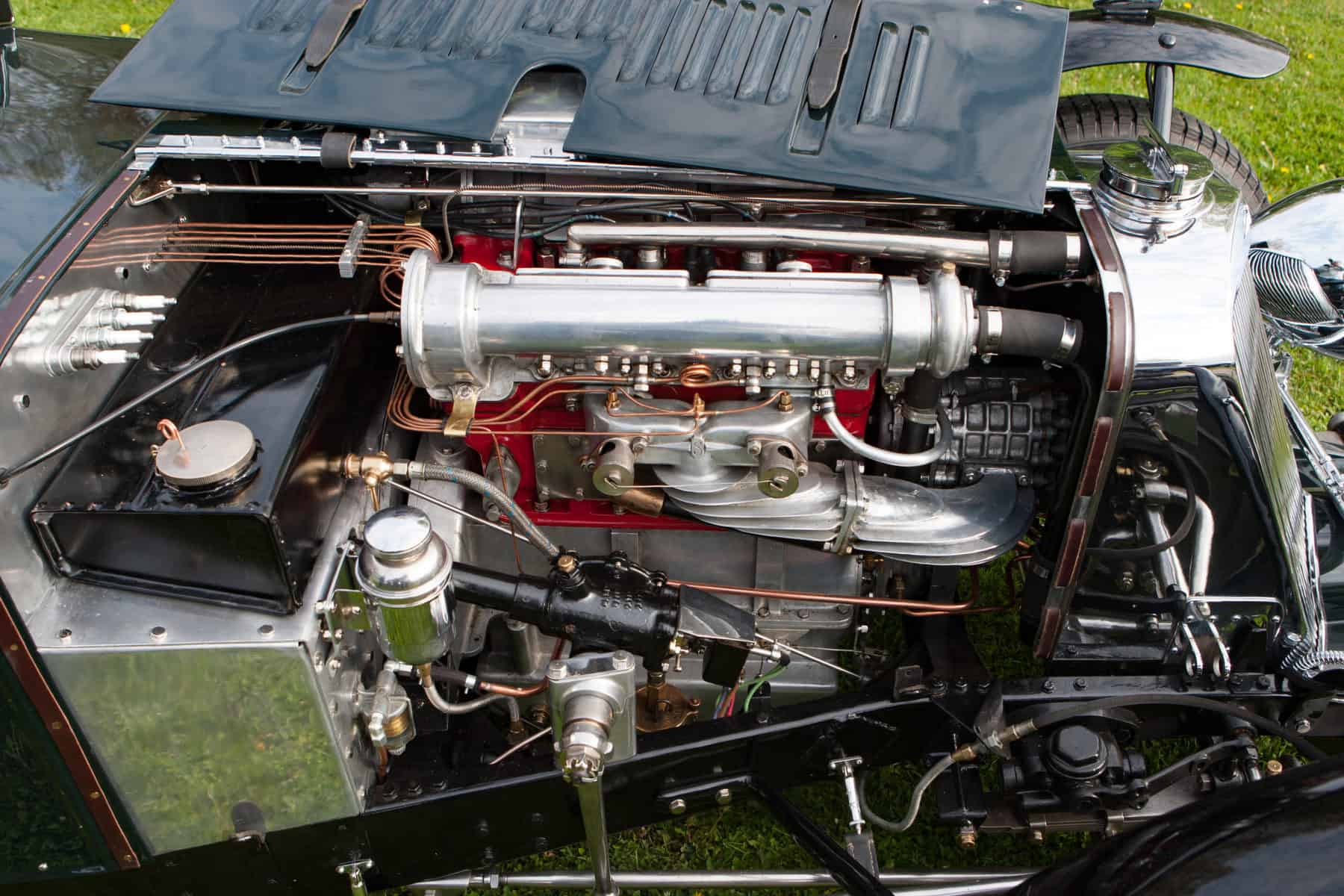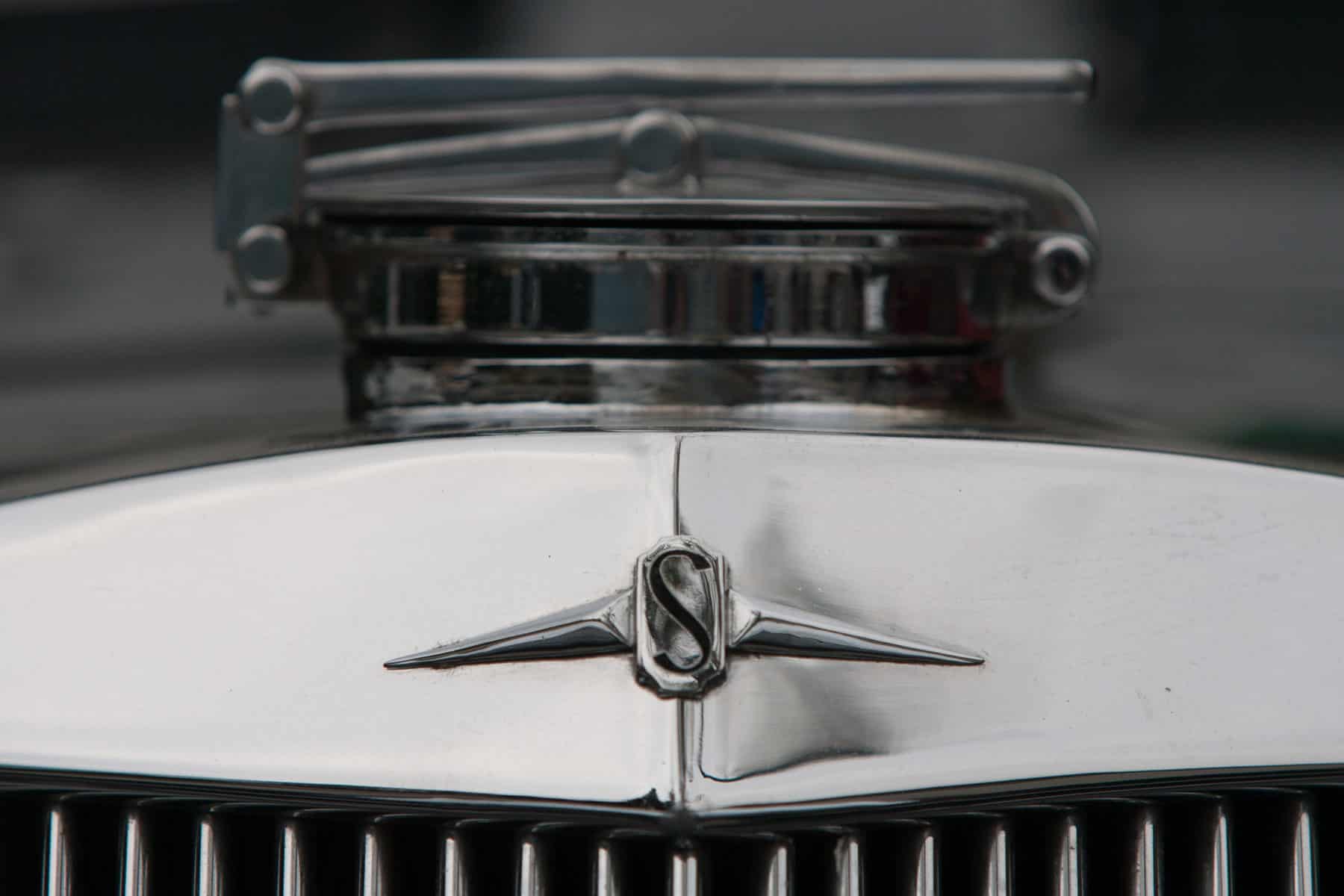Squire 1500
Recalling the remarkable Adrian Squire
WORDS & IMAGES BY: WOUTER MELISSEN
Many of us have fantasized about building a sports car of our own design but very few will have made detailed plans to do so, let alone at the age of fourteen. One such exception was Adrian Morgan Squire, who was born in 1910 just north of London.
Although young Adrian was very ambitious, even he could not have imagined that he could make the dream of his 1.5-liter sports tourer come true when he was in his early twenties. The result was what could very well be the finest British sports car built during the 1930s.
Adrian was the youngest of four children and his father was a trained engineer, working for a gravel excavation company. During his time in high school, he was already hard at work making plans for his dream car. At sixteen, he created a six-page catalog, which went into every detail of the car, down to the 68mm and 103mm bore and stroke of the proposed four-cylinder engine. After graduating from high school, he briefly studied electrical engineering. He left early to serve as an apprentice with Bentley, followed by a proper job at MG when he was just nineteen years old.
The dream of producing his own car was still very much alive and in 1931, Squire Motors was established. Adrian received backing from his wealthy friend Sherman Stoner. They were soon joined by Adrian’s old schoolmate, G.F.A. “Jock” Manby-Colegrave, as well as Reginald Slay, who would be responsible for sales. Slay’s role was a particularly crucial one as Squire not only planned to produce and sell cars of their own making, but to also buy and sell existing sports cars. The revenue created by these sales would help finance the Squire Car Manufacturing Company, which would actually produce the cars.
Just twenty-one years old at the time, Adrian was now in the position to turn the plans he had made into reality and create the all-British, 1.5-liter sports tourer with a “low center of gravity to ensure maximum stability on corners.” Close to the showroom in Henley-on-Thames, on Remenham Hill, a small cottage with a workshop was acquired. This allowed Adrian to carry on with his work in relative peace and quiet. While the plan had been to produce the car entirely in-house, Adrian quickly realized that he had neither the financial means nor the facilities to do so.
Fortunately, Adrian found a kindred spirit in Douglas Ross, who was the managing director of the independent British arm of Italian engine builder Anzani, best known for small displacement, straightforward car and motorcycle engines. Ross felt British Anzani needed to up its game. He laid out a new 1,500 cc engine with twin overhead camshafts and put out a press release describing the project in September 1932. This was exactly what Adrian was after, and the two men quickly came to an agreement – British Anzani would design and build the engine for the upcoming Squire sports car.
Happy to supply Squire with his engine, Ross in fact had Frazer Nash in mind when he first created it, as the engine was based on the overhead valve engine already being used by Frazer Nash. Added to the same bottom half was a twin-cam head. Intended to be naturally aspirated, the compact four-cylinder unit produced 66 hp. But Adrian had more ambitious goals, and he asked for a David Brown supercharger to be fitted. This raised the power to a more competitive 110 hp at 5,000 rpm but also made the engine woefully unreliable. The added boost of the supercharger often proved too much for the head gasket and the engine also had regular overheating issues.
Badged as a Squire engine, the supercharged Anzani R1 was mounted into a steel ladder frame. Designed in-house, the major chassis components were produced at specialist companies and only assembled in the Squire workshop. The underslung frame was available in short- and long-wheelbase configuration. The suspension featured semi-elliptic leaf springs and was fully adjustable. The lightweight machine was fitted with massive hydraulic drum brakes that were also designed in-house. These allowed the car to stop from 50 km/h in just ten meters. A four-speed preselector gearbox was fitted, which was produced by E.N.V. following a Wilson patent.
In September 1934, the Squire was officially announced. It was offered in chassis-only form or with standard Vanden Plas coachwork in either open or closed form. Each Squire came with the guarantee that it had exceeded 100 mph at Brooklands, but it was not cheap. The rolling short chassis was £950, and the long-wheelbase Vanden Plas Drophead Coupe was priced at £1,350. That was more than the amount Bugatti or Alfa Romeo charged for similar cars and almost twice as expensive as a 2.0-liter Aston Martin. Although arguably not the best value, the new Squire sports car was well received, particularly the superb handling that resulted from its rigid chassis and low center of gravity.
The initial production run entailed three short-wheelbase cars. The first was the factory demonstrator while the next two were allocated to backers Jock Manby-Colegrave and Sherman Stoner. Unfortunately, Reginald Slay struggled to find any other interested parties and even a considerable price cut did not really get the ball rolling. A fourth car, the first with a long wheelbase, was commissioned by Val Zethrin, the heir to a Swedish steel fortune. He had the car fitted with a one-off body by Ranalah. In order to appeal to a broader audience, a more affordable “Skimpy” model was added to the line-up with bodywork by Markham.
In a different attempt to boost sales, Adrian also created a single-seater racing version of the 1,500 cc sports tourer. It was entered for Louis Fontes in the July 1935 British Empire Trophy race at Brooklands. The engine lasted only nine laps, when the crankshaft broke. The car was back out in September for the BRDC 500. This time a chassis fracture brought an early end to Fontes’s charge. He did place third at the Second Mountain Handicap race a month later with the Squire competition car. Zethrin also raced his car with some success in 1937.
Two more cars were sold early in 1936 but the writing was on the wall. By July of 1936, with just seven cars built and less than two years after the car had been officially announced, the curtain came down on the Squire Car Manufacturing company. It was not quite the end, as all remaining parts and spares were bought by Val Zethrin. With the help of two former Squire employees, he produced at least two more cars, one fitted with a Corsica roadster body and a second with a body of Zethrin’s own design. That brought production up to nine cars, although some sources suggest that a third had been produced under Zethrin’s control.
One project that was never completed was a new competition car that had been commissioned by the Duke of Grafton. Designed to compete in the Voiturette, or junior Grand Prix category, it was to be powered by a proprietary six-cylinder engine. Like the Alfa Romeo engine of the time, it would have a center drive for the camshafts and twin superchargers. Sadly, the duke was killed racing a Bugatti in 1936 and with his death, the project lost its driving force.
As the Squire Car Manufacturing Company was a separate operation, Squire Motors did remain in business, but Adrian Squire had little interest in becoming a car salesman. Instead, he rejoined his old mentor W.O. Bentley at Lagonda. With war looming, he started working at the Bristol Aeroplane Company. Shortly thereafter, he was sadly killed during an air-raid of the factory in September of 1940. He was just thirty years old.
Of the nine or ten Squires produced between 1934 and 1937, eight are known to have survived. The bugs that plagued the cars early in their lives have long been ironed out and today they are highly sought after. Most of them are owned by major collectors but, fortunately, they are regularly shown, demonstrated, and even raced at events around the world. In a test for the September 1986 issue of Road and Track magazine, Phil Hill drove one together with an 8C 2300 Alfa Romeo and a Bugatti Type 55. Although the latter two are icons of the era, Hill felt the handling and braking of the Squire was that of a car built in the 1960s and not the 1930s.
The surviving cars serve as a great testament of Adrian Squire’s remarkable talent, of which the world benefited far too briefly.











